Sir Simon Rattle recently visited London with the Berlin Philharmonic Orchestra, of which he is resident conductor. The orchestra’s ‘London residency’, during which it gave sold-out performances of all the Sibelius symphonies, was hosted by the City’s symphony hall at the Barbican Centre. During the course of his visit Sir Simon also conducted the London Symphony Orchestra, to which he has recently been appointed as music director, and indicated that he might even return to his native country as that orchestra’s resident conductor, if a suitable venue were provided. The implication is that the Barbican Centre, currently home to the London Symphony Orchestra, is not suitable, a judgment with which almost all music lovers agree.
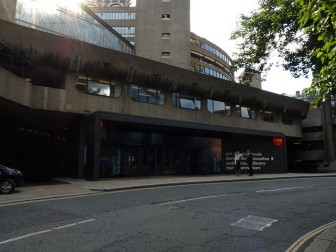
Built in the 1970s in the brutalist style by the firm of Chamberlin, Powell and Bon, and attached to a housing complex of jagged concrete towers, the Centre is surely one of the ugliest buildings in the City of London, and one that lies athwart a once beautiful pattern of mediaeval streets as though dropped there by the Luftwaffe. It is approached from the Barbican Underground Station via a long tunnel with bare concrete walls, in which the roar of traffic makes all conversation impossible. At the far end of this tunnel a concrete platform rises from the street with the promise of an entrance – but leads only to a blank concrete wall. After a search around destroyed street corners the entrance is eventually revealed, and takes the form of a fissure in the cliff of concrete, leading downwards into Nibelheim. Glass doors and blank walls open at last onto a vast cave without orientation, in which visitors are entirely dependent on signs to direct them. You can wander in this shapeless space for many minutes before discovering the concert hall, which you enter through obscure doors in occluded corners. In its narrow concrete amphitheatre you can then listen to music whose beauty is such a reproach to the surroundings that you are not surprised that the acoustics seem designed expressly to muffle the sound.
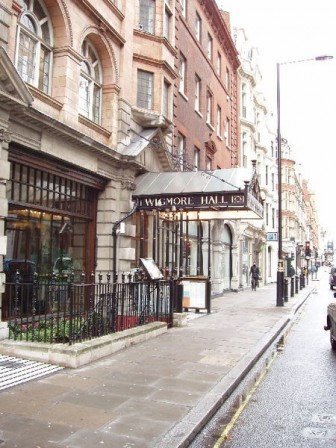
The Barbican Centre is not the only offensive concert hall in London. The pattern began with the Royal Festival Hall, designed by the modernist Sir Leslie Martin for the South Bank of the Thames as part of the Festival of Britain ‘renewal’ in the 1950s. Like the Barbican the Royal Festival Hall is a concrete shell, disconnected from its surroundings, and dependent on a work of clearance that has left nothing standing of the pre-existing urban fabric. Because it can be reached by a footbridge from the comparatively unspoiled North Bank of the river the Hall remains connected to the life of the city, and has given rise to its own community of washed up Bohemians, who congregate in the untidy downstairs bar. For all that, its obtrusive form and dead acoustic have for half a century prompted Londoners to ask themselves whether concert halls have to be visitors from alien planets, and whether there might not be a way of continuing what was once the accepted custom, of building them as part of the city. The Royal Albert Hall is in no way out of place on the edge of Kensington Park, and the beautiful Wigmore Hall is just another terraced house in Wigmore Street. Could we not build like that today, so that the concert-hall is restored to its rightful place – the place that it should share with the theatre and the restaurant – at the centre of urban life?
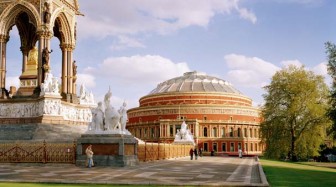
Two obstacles lie before that commendable goal: modernist architecture, and the architects who design it. From the outset of the Modern Movement it has been dogmatically assumed that the form and situation of a building is determined by its function, and that the interior of the building is therefore what matters. Maybe the exterior should express the function, or maybe it should in some way stand out from its surroundings, so as to announce that function or (preferably) to declare the genius and originality of the architect. But it is the thing that goes on inside the building that matters, whether or not it is integrated into the surrounding life. Hence, when the building performs its original function badly – with a dead acoustic, as at the Barbican and the Festival Hall –people become painfully conscious of its alien character. The acoustics of the Albert Hall are by no means perfect. But who objects to it? With its Pantheon dome, its classical orders and its terra cotta frieze it is a smiling presence in the life of the street and the park. For that reason it is also adaptable. You can use the Albert Hall for reunions, dances, lectures, stage performances as well as for concerts, and if ever people ceased to need a concert hall on the edge of Kensington Park it would surely serve almost as well as a University auditorium, a mosque or a temple to some future deity.
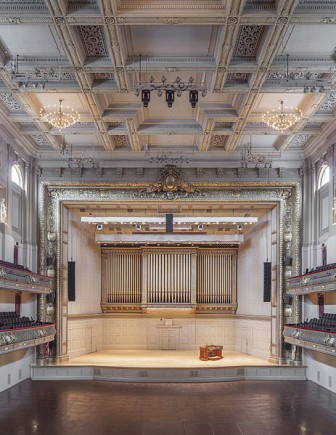
But here is where we have to reckon with the other great obstacle to building an acceptable symphony hall in a real city, which is the modernist architect. When Adolf van Gendt began work on Amsterdam’s Concertgebouw in 1883, he was working on open pasture outside the city. But he built in the accepted classical style of the day, as though designing a city hall, with walls that could line a street without oppressing it. In due course the city grew to meet his building, which now stands proud amid classical and baroque facades, a citizen among citizens. Around the hall has grown a lively quarter of the city, and the cafés and restaurants in the neighbouring streets are popular not least because they give a view of this serene and dignified building. It is perhaps worth remarking that the Concertgebouw is one of three symphony halls – the others being the Vienna Musikverein and the Boston Symphony – which are noted for their superlative acoustics, and all three are built in the classical style, the last by McKim Meade and White, who took the trouble to consult the physicist Wallace Clement Sabine as their acoustical engineer.
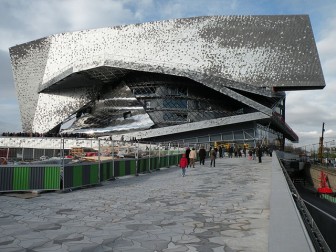
Unlike Stanford White modernist architects are singularly reluctant to adopt a style that fits in to the urban fabric. Typically they wish their building to stand out, to attract attention to itself as a visitor from the future, whether by negating the lines and details of the surrounding streets, as in Baltimore, or by standing stark and isolated in a park, like the new symphony hall designed by Jean Nouvel in Paris’s Parc de la Villette. Nouvel’s building, now the subject of dispute on account of its cost overrun (and what modernist project has ever stayed within budget?), has the appearance of a flying saucer, though with too many knobs and struts to navigate the dense atmosphere of our planet, with the result that it has crash-landed in a Park in Paris. Whether it will work acoustically has yet to be definitively proven. But that it does not work as architecture, still less as part of the world’s greatest city, is immediately apparent. Only because it is in a park does it wreak no havoc on its surroundings, and it is inconceivable that the neighbouring streets, were they too to invade the greenery, should incorporate it as one of their neighbours.
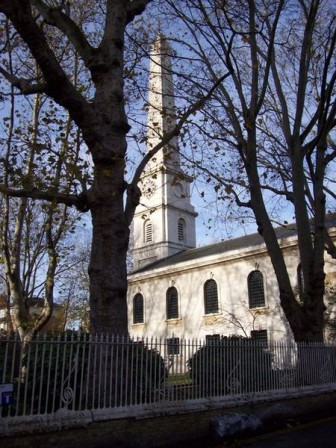
This point is, it seems to me, absolutely vital if the symphony hall is to have a real future. The modern concert venue is designed with only two things in view: to create a space uniquely designed for a kind of laboratory listening, and to announce to the world the arrival of yet another architect of genius. The combination of inner sterility and outer megalomania essentially cuts the venue off from the life around it. The resulting hall is not part of the city but stands in opposition to it, defiant testimonial to a dying culture. In this it also contributes, as does the Barbican Centre, to urban decay. Who wants to linger in those destroyed streets, to take time out beneath an aggressive concrete overhang, to look in vain for a coffee shop or a bookstore in the shadow of a building that looks as dead on the outside as it sounds to the ear within? Only if we wake up to the fact that this kind of modernist architecture is the enemy of the city will we begin to build the concert venues that we need – the venues, namely, which attract people to their neighbourhood, and provide a hub around which an artistic culture can again begin to grow.
Of course, architects will object to the suggestion. Modernist buildings are expensive and produce monstrous fees for their designers. They are also unadaptable, and therefore constantly in need of expensive adjustments, on which their architects usually have a lien. For this reason a struggling arts organization cannot normally afford a modernist concert hall, and would do far better to take over some existing building, such as a disused church or meeting hall, so as to adapt it for the purpose. Such, indeed, has been the normal practice in London, with the London Symphony Orchestra using the beautiful 18th century church of St Lukes in Old Street for its chamber concerts and its educational programs.
Moreover, large modernist buildings are almost invariably exercises in branding: They declare that their architects belong among the stars. Hence everybody has heard of Jean Nouvel, whose Wikipedia article is spread over two pages of uncritical hype, while nobody has heard of Adolf van Ghent, who has no Wikipedia article at all.
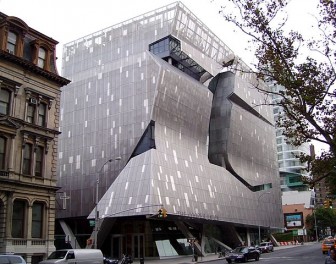
The problem of adaptability is not confined to the design of concert halls. From its inception, modernism has been a style against the city, and not a style that seeks to be a part of it. This is apparent in Le Corbusier’s original plan for Paris, which involved demolishing the city North of the Seine, and replacing it with glass towers amid sterile squares of trampled grass. It is apparent in the Centre Pompidou, built by Presidential decree, and which involved demolishing street upon street of classical houses in the Marais and replacing them with a collection of steel pipes and girders in infantile colours. It is apparent in the huge kitchen appliance dumped by the architectural firm Morphosis in New York’s Cooper Square.
All such projects show the extent to which our delicate urban fabric, built over many years in styles that exist because they are publicly accepted and adaptable to our changing uses, is under threat from the new architectural forms. These are usually designed for the specific use of a single client, and designed at a computer. Their shapes are dictated purely from within – they have no facades and no real attempt is made to fit them to their surroundings or to make them adaptable to any other use than the one that first required them. Eventually, when our city streets are lined with magnified hair-dryers, iPads, refrigerators, computer gadgets and food processors, all surviving awkwardly from a use that has vanished, people will wake up to the fact that the city has disappeared. A few lonely souls will drive in of an evening to take their seat inside a streamlined kettle, there to hear the strains of a Mahler symphony bouncing along the concrete walls. But most people will stay at home in the suburbs, preferring phones in their ears to live music, when live music must be reached by travelling across a desert of decaying gadgets to a comfortless kettle in a moonscape.
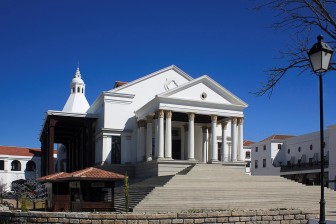
All is not lost, however. The New Urbanist movement, and the emergence of schools devoted to real architecture such as that at the University of Notre Dame, are sources of hope. And there are growing numbers of architects willing to take on big projects in a style that can be integrated into the fabric of a liveable city. I think of Leon Krier, principal architect of the Prince of Wales’s development at Poundbury, of Quinlan Terry, whose work on the restoration of Williamsburg provides a model for American urbanism, of John Simpson, architect of a new concert hall at Eton College, of Pedro Godoy and Maria Sanchez, graduates of the Notre Dame architecture school and architects of the impressive New Town Cayala in Guatemala. There is no longer an excuse to think that modernism is the only style available, or that the aesthetic of a symphony hall should require it to stand out from its surroundings, and not to belong to them. The time has therefore come for a real concert venue, one built into the city, and not against it like that at London’s Barbican. Such a symphony hall, built in the classical style, need not involve the acres of demolition and clearance required by the modernist gadgets. It can be built behind a façade that respects the fabric of the city, as the old theatres were built, and if, against our hopes, it fails to revive the concert-going habit, it will change its use quietly and inoffensively, remaining as a restaurant venue, a university or – best of all – a school of architecture, devoted to the ideals that caused it to be built.
